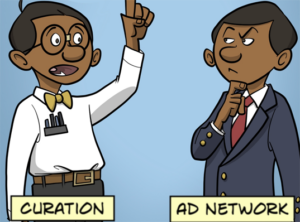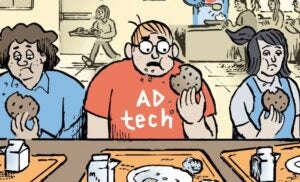 “Data-Driven Thinking” is written by members of the media community and contains fresh ideas on the digital revolution in media.
“Data-Driven Thinking” is written by members of the media community and contains fresh ideas on the digital revolution in media.
Today’s column is written by Sacha Xavier Reich, partner, media and innovation director for Neo@Ogilvy.
It’s funny that they call it native advertising because it is anything but indigenous.
Native advertising can be described as ads disguised as content. It is usually designed in the same style and look as the articles you are reading. In reality, it is a brilliant tactic that consumers and marketers agree is more aesthetically pleasing and relevant to readers than banner ads. For the past two years, they’ve been welcomed with gusto by advertisers, such as myself.
But as with nearly all successful online advertising tactics, there is a dark secret ruining the integrity of some native partners.
Let’s say you are reading your favorite business news site and come across this:
Looks like interesting stuff, right? But what is actually slipped into some of these legitimate buys are pages that merely host banners. From left to right we have:
1. A retail bank’s homepage, with a goal of driving brand site traffic.
2. A nonfunctioning page.
3. A Web page full of banner ads for major brands, with a goal of churning what are clearly retargeted ad impressions.
4. A major American portal, with a goal of driving site traffic and churning ad impressions.
5. An electronics manufacturer’s homepage, with a goal of driving brand site traffic.
You can see here how advertisers are trying to disguise brand pages as content, but there are also banners for major companies that are just sitting on pages churning impressions. In the third example, the article on healthy foods is one of those lists that make you go through eight pages of retargeted ads surrounding minimal content in order to read seven examples of foods.
While these ads have high click rates, are they really producing anything or just running up your impression tab? Some theorize that when users land on a page that they think is content but isn’t, they will likely click on a banner to leave the page because they have nowhere else to go.
As an industry, there needs to be some quality control. There are no regulations here because it’s called native and not banners or advertorial.
General Population: Perhaps you will eventually forget the line between advertising and content. Advertisers: Are you getting data on the environment in which your ads sit? Publishers: Are you accepting bad or scammy advertising in your native offerings?
We need to advocate useful and relevant advertising and protect the integrity of online advertising. Transparency is a term used by many of my publishing partners, but when will the industry stop letting the wolf manage the sheep?
Follow Sacha Xavier (@sachaxavier) and AdExchanger (@adexchanger) on Twitter.












